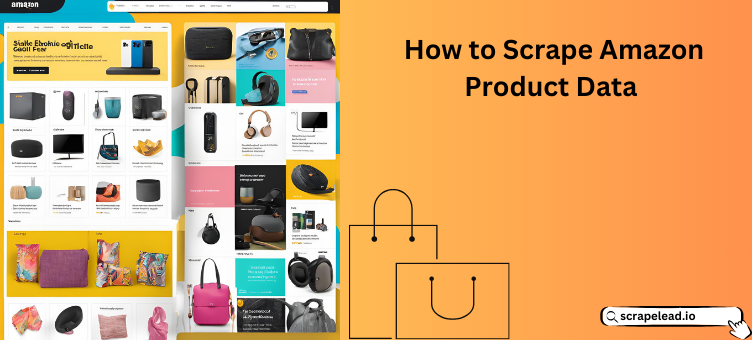
How to Scrape Amazon Product Data
Did you know that 50% of online shoppers begin their product search on Amazon?

That’s right—Amazon takes the lead, not Google or any other platform.
Why?
The answer is simple: many people trust the platform, and it always delivers or has any product you can dream of.
But simply collecting product data isn’t enough anymore. The internet is both a blessing and a curse; it contains accurate, very false, and filthy information.
That’s why we made this guide.
This blog is the filter between accurate and inaccurate information regarding Amazon Product Data.
We are giving you the best breakdown so that next time you want to scrape Amazon product data, you only go for the accurate data sets and not just scraping for the sake of it.
Buckle up; here we go!
What is Amazon Product Data Scraping?
Amazon Product Data Scraping involves getting specific information from Amazon and using it to your advantage.
Think of it like treasure hunting, but instead of chests of gold, you’re after prices, reviews, rankings, and much more.
However, if we all go scraping Amazon in the same way, it’d be like a hundred pirates digging up the same X on the map—chaotic and definitely not productive.
That’s where being strategic and smart comes in. And if you stick around, we’ll show you how to be good at scraping Amazon—strategic, savvy, and just the right amount of unpredictability. So, hang tight and read on.
But now:
Why Scrape Amazon Product Data?
There are plenty of reasons one might scrape Amazon—for fun, business, or research purposes.
While all these motivations can spark the desire to dive into the data, let’s be honest: business and research purposes tend to carry a bit more weight, wouldn’t you agree?
Now, let’s dive into the benefits of Scraping Amazon Product Data and why it is really worth the effort:
- Market Research and Competitive Analysis: Examine upcoming market trends alongside developing product niches for business leadership. By analyzing your competitors’ successful items, you can then determine what to offer to fit the market.
- Price Optimization and Dynamic Pricing: Live competitor price monitoring enables your business to automate pricing changes according to market patterns, which helps you generate maximum profits.
- Inventory Planning and Demand Forecasting: Use the scraped data to estimate expected product demand accurately. This method allows you to maintain proper inventory levels and direct investments toward successful categories in your inventory portfolio.
- Product Development and Improvement: Examining customer opinions can help you better understand frequently reported product issues and competitive features, leading to better product development.
Now, onto the deal maker or breaker:
Is it Legal to Scrape Amazon?
Have you ever heard the phrase: Legally or Illegally, we gon get that money?
Well, on Amazon, we are only prompted to do it the legal way:

So hear me out; the legal way is always the right way, and we’ll opt for that any day, any time, so get rid of any illegal schemes you have.
Scraping Amazon data is not totally illegal but involves significant legal and ethical considerations.
While gathering publicly available information like product details is allowed, you are not allowed to extract any sensitive or private data without consent.

The legality of scraping also depends on how you intend to use the data. For instance, using scraped data to replicate products or exploit competitors is unethical and can result in lawsuits or other strict consequences.

Adhering to Amazon’s policies and considering the implications of your scraping activities are crucial to navigating these complexities.
To ensure you don’t raise any alarms towards your scraping, ensure you only go for publicly available data at all times.

Legal and ethical terms can be hectic, so here are three quick bonus tips to balance the score:
Bonus Tip 1: Consult a legal expert if you’re uncertain about the legality of your methods or intentions regarding data collection from Amazon.
Bonus Tip 2: To scrape data legally and ethically, respect Amazon’s boundaries while minimizing throttling requests and avoiding excessive data extraction at once.

Bonus Tip 3: Using Amazon’s official APIs is also a good, low-risk alternative for accessing product data without violating their policies.
To set the record straight:
What Data Should You Extract from Amazon? (To be Safe)
To scrape Amazon safely and avoid legal issues or getting blocked, focus on extracting the following types of data:
- Product Data such as the title, ASIN, brand, descriptions, specifications, and images and videos.
- Pricing Information such as current and discounted prices, price history, seller price variations, and shipping costs.
- Customer reviews such as review count, star ratings, and review content.
- Best Sellers Data, such as Best Seller Rank (BSR), trending products, and top competitors.
- Product Availability, such as stock status, restock alerts, and seller count.
- Category Information, such as product category and subcategory, related products, and search rankings.
- Competitor Listing, such as competitor product details, promotions, and discounts.
By focusing on these data types, you can minimize the risk of violating Amazon’s policies while gaining valuable insights for your business.
How to scrape data from Amazon
Now that we know what we are doing is legal, the next step is getting the data.
There are two ways you can extract the data:
- Use Python
- Use an Amazon scraper
Both methods are effective, but;
Using Python requires some coding skills while using an Amazon scraper requires finding one that guarantees accurate data.
To help you make up your mind, here’s a comparison table for these two methods:
| Criteria | The Python Route | The Amazon Scraper Route |
|---|---|---|
| Ease of Use | Requires programming knowledge | User-friendly, no coding required |
| Customization | Highly customizable for specific needs | Limited customization with templates |
| Setup Time | It is time-consuming to set up and debug | Quick setup with pre-built templates |
| Scalability | Easily scalable for large projects | May have limitations on scaling |
| Cost | Cost-effective if you have coding skills | May require subscription fees |
| Maintenance | Requires ongoing maintenance and updates | Generally low maintenance; tool updates handled by the provider |
| Data Control | Full control over data extraction | Less control over data extraction specifics |
| Learning Curve | Steeper learning curve for beginners | Minimal learning curve; intuitive interface |
This table clearly shows that using an Amazon scraper is the best option for any beginner trying to scrape Amazon Product Data.
Now that this is the go-to method, which scraper should you use?
Well, I’m glad you asked because we provided an in-depth guide on the best free tools (cause you are just starting out);
You’ll notice that our Amazon Product Scraper is shining and overpowering the rest. It’s that good.
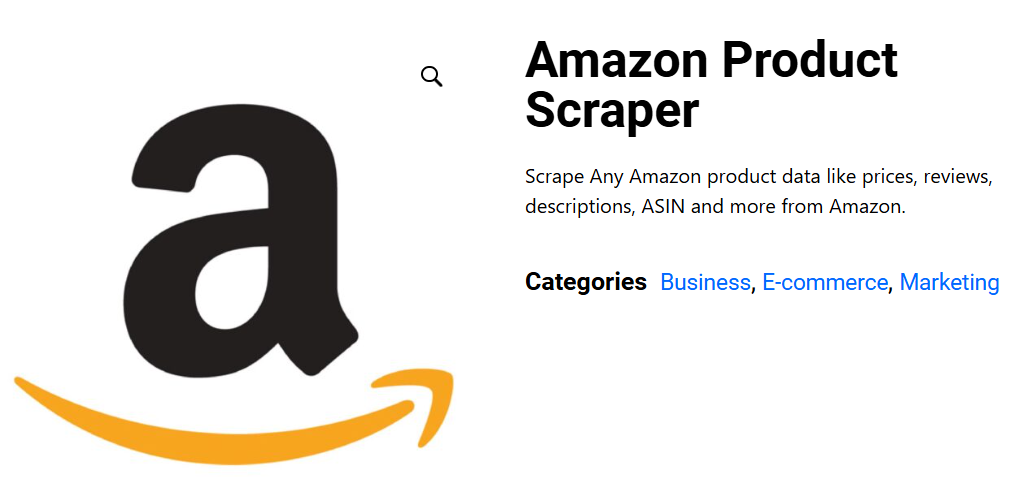
How Every Beginner Should Scrape Amazon Product Data
We’ve established that using an Amazon scraper is the go-to method; it’s easy, simple, and definitely less stressful if you are not techy.
However, we haven’t covered why you should go for ScrapeLead and why you should use our Amazon Scraper. Let’s clear that up;
Fingers crossed you were convinced, and that’s why you are back here!
So now let’s make use of Our Amazon Product Scraper:
1. First, sign up/Log in to your Scrapelead account.
2. Next, navigate to your dashboard, find the store, and trace the Amazon Product Scraper:
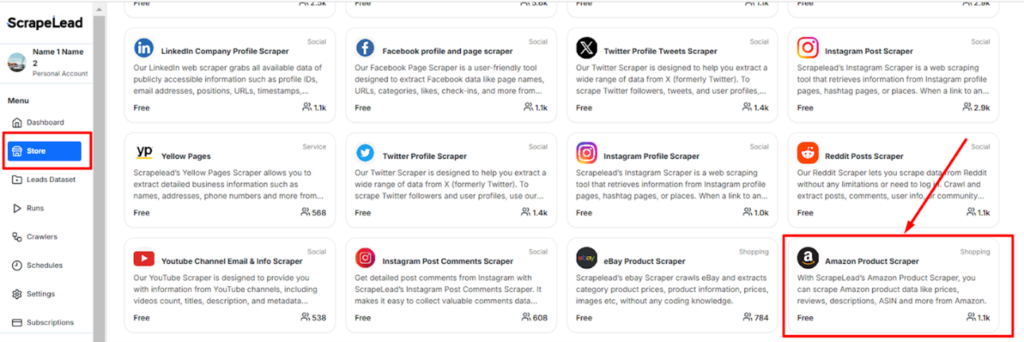
3. Now PASTE the link to the crawler (You can add as many links as you wish; you’re welcome)
Copy the link from Amazon first:
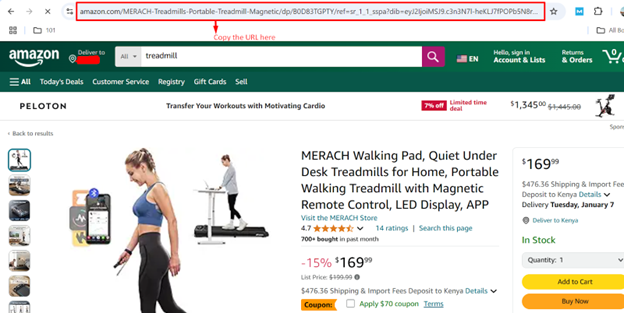
Now, paste the link/links:
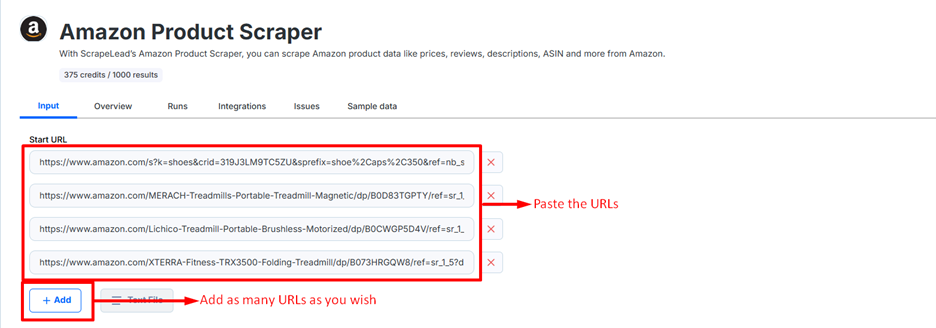
4. Now START the crawler:
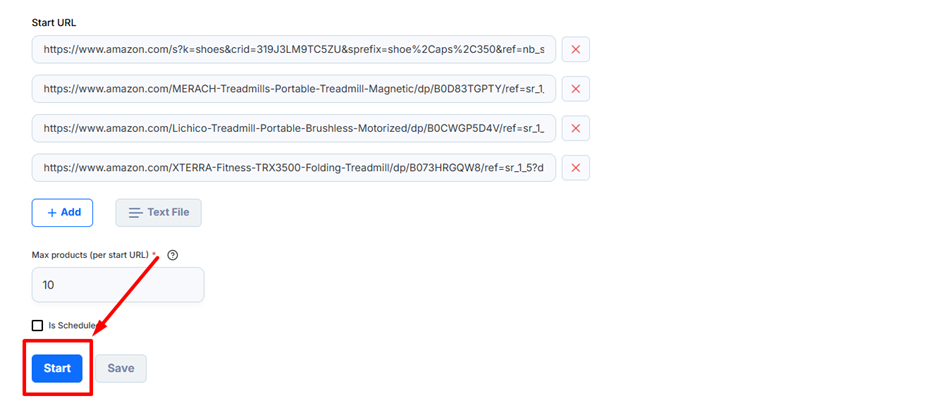
5. Then, finally, download the data, either in CSV, XML, or JSON:

And just like that, we are done! Done and dusted in just 5 steps.
Now, here’s the strategic and smart part, as promised: if you want to go a step further, there are two more tools just for you.
First up, Scrapelead’s Amazon Reviews Scraper:
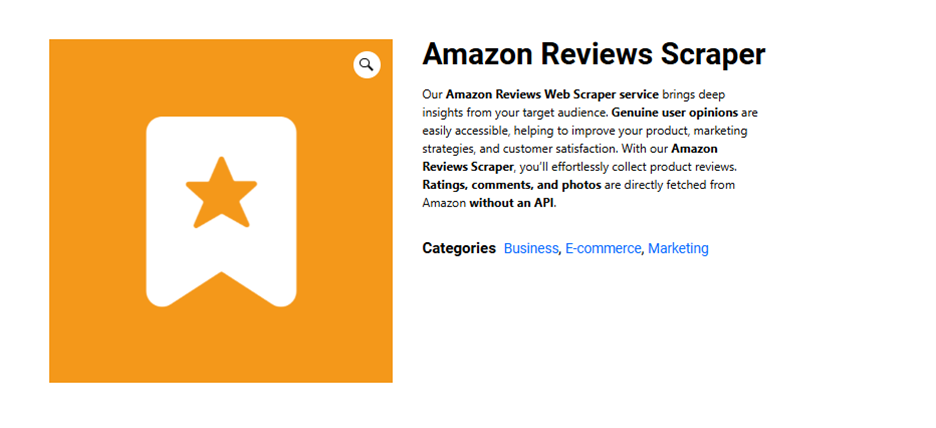
With it, you can extract:
- Review Rating (1 to 5 stars)
- Review Content (text of the review)
- Review Title (if provided)
- Date of Review
- Verified Purchase Status (yes or no)
- Reviewer Information:
- Reviewer Name/Username
- Reviewer Location (if provided)
- Helpful Votes (number of people who found the review helpful)
- Review Images/Videos (if provided by the reviewer)
- Review Comments (replies to the review, if available)
Then, next, we have the ScrapeLead Amazon Seller Scraper:
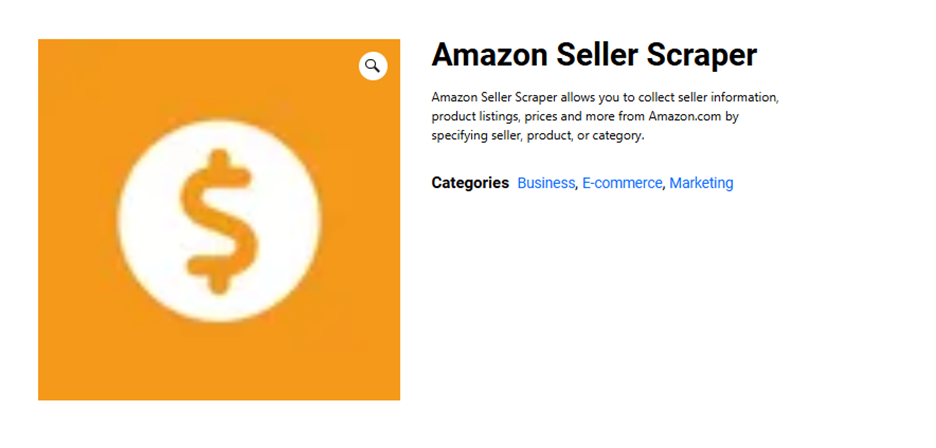
With it, you can extract:
- Seller Name/Store Name
- Seller Rating (average star rating)
- Number of Seller Ratings (total number of reviews for the seller)
- Seller Feedback Percentage (percentage of positive reviews)
- Seller Location (if available)
- Shipping Information (e.g., shipping methods, free shipping)
- Return Policy (if provided by the seller)
- Seller’s Product Listings (product names, prices, ASIN)
Remember, the Amazon Product Scraper is just the tip of the iceberg; if you want to go deeper, try all three of these Amazon Scrapers and watch yourself balling your way through Amazon.
However, you can only win once you start using these scrapers, and what better way to do so, than with 1000 free credits?
Closing Off
Scraping Amazon for product data doesn’t have to be as intimidating as it sounds. Whether you’re using our Amazon scraper or Python, the key is to stay strategic, ethical, and aware of Amazon’s policies.
While you might not find treasure chests of gold, you’ll be armed with valuable Amazon product data to help your business grow.
So go ahead, scrape Amazon like a pro—just remember, the only thing you want to get caught scraping is product info, not personal info (so stay ethical)!
Happy scraping, and may your product research with Scrapelead always be as smooth as your favorite coffee order!
But before you go, here’s your reminder to;
FAQ
Yes, Amazon takes several anti-scraping measures to detect and block excessive scraping activities.
Yes, it does. Our Amazon Product Scraper goes above and beyond to ensure you don’t just have any data. It guarantees accurate data that you can trust.
Well, trust is earned, and not given. We guarantee you the best experience as our scrapers are built upon industry standards and deliver great quality and trustable data. Give us a shot and see it yourself.
Employing scraped data in commercial initiatives may heighten your legal issues. However, using publicly available data is allowed, so only use that. As long as you avoid prohibited data, and use the data ethically, you and your business will be safe.
Related Blog

11 Real-World Use Cases of Web Scraping in 2025
Explore 11 powerful examples of web scraping and see how to use data to gain insights, leads, and a market edge in 2025.

Which Review Scraper Is Best for Your E-commerce Business?
Want a simple way to start scraping reviews? Learn how to grab real customer feedback and make smarter product decisions fast.

How to Scrape Social Media Without Coding (2025 Guide)
Discover how to collect social media data effortlessly with no-code tools in this 2025 guide.
